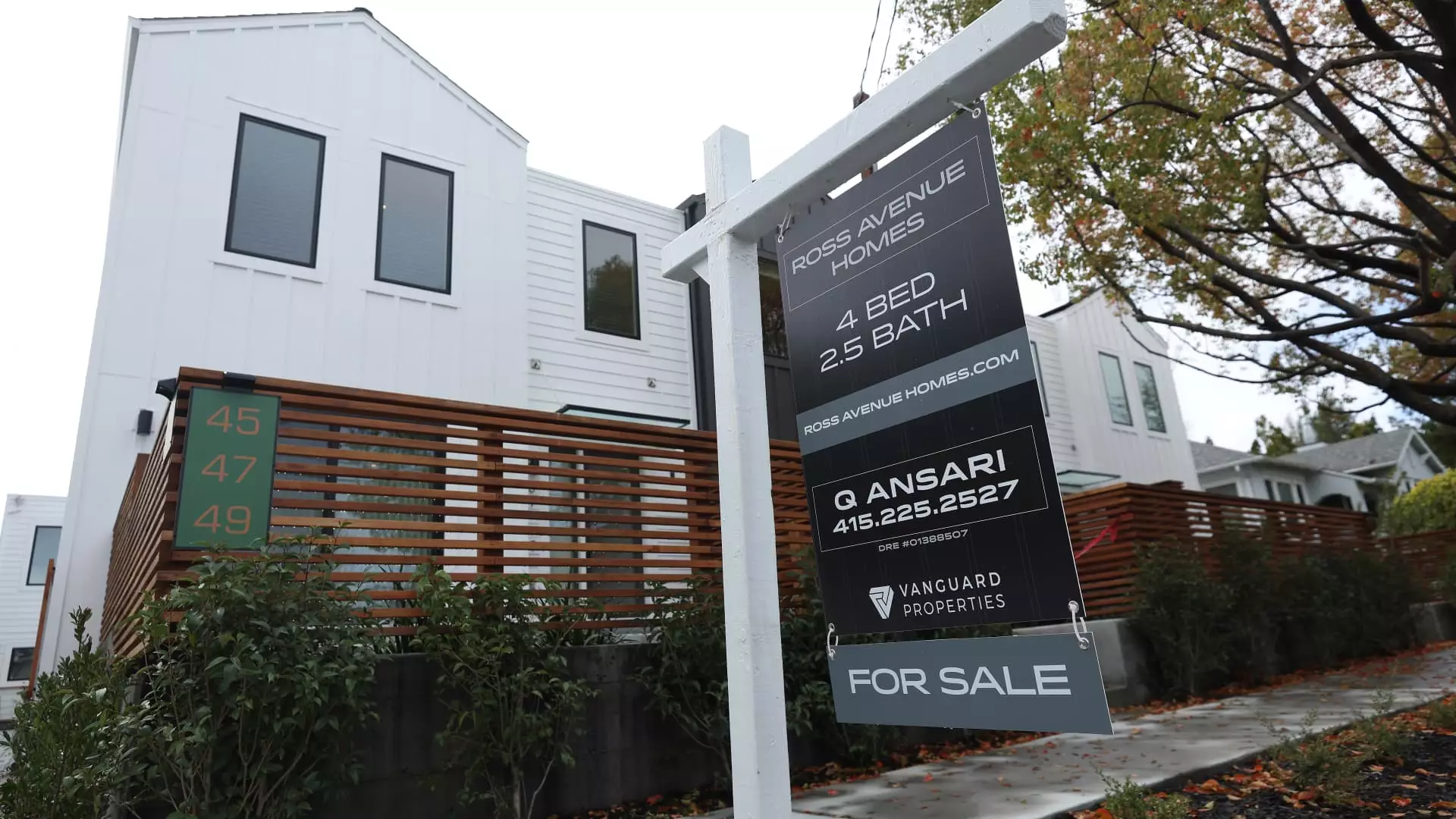The real estate market took a hit in July, as sales of previously owned homes dropped by 2.2% compared to the previous month. According to the National Association of Realtors, this decline is part of a larger trend, with sales being 16.6% lower than July of the previous year. These figures reveal a concerning state of affairs, as the number of homes sold in July was the lowest since 2010. In this analysis, we will delve into the factors contributing to this decline and explore the implications for the housing market.
One of the key factors cited by the National Association of Realtors is the rise in mortgage rates. In May and June, rates leaped from around 6.5% to well over 7%, which likely prompted prospective buyers to delay their home purchases. This delay is evident in the closing figures for July. Additionally, the tight housing supply also played a role in the decline. As of July, there were only 1.11 million homes for sale—a 14.6% decrease compared to the same period in 2022 and the lowest level since 1999. This scarcity in supply has pushed prices higher, as competition amongst buyers intensifies. The current state of the market can be summarized by the fact that there are now only half as many homes for sale as there were pre-pandemic.
While home sales decreased month to month in all regions except the West, the Northeast experienced the largest decline, with a 5.9% drop. The West, on the other hand, saw a modest increase of 2.7%. Interestingly, the West is both the most expensive region and the only region where prices did not rise in July compared to the previous year. Lawrence Yun, the chief economist for the National Association of Realtors, attributes this discrepancy to a slight price decline in the West. The variations in regional performance highlight the complex dynamics at play in the housing market.
In terms of price trends, the median price of a home sold in July was $406,700—an increase of 1.9% from the previous year. This price growth was consistent across all regions except the West, where prices remained flat. Furthermore, sales across all price categories declined, but the highest price category (homes over $1 million) experienced the smallest decrease. This can be attributed to the fact that there is a greater supply of high-end homes, while the lower-end market remains lean.
Despite the decline in home sales, there is still strong demand in the market. Approximately three-quarters of homes sold were on the market for less than a month, indicating a high level of buyer interest. Additionally, around 30% of homes sold for above the list price, reflecting the competitive nature of the market. However, the buyer profile is evolving. First-time buyers are gaining traction again, accounting for 30% of sales in July—which is a significant increase from the previous month. Furthermore, there is an increasing demand for Federal Housing Administration (FHA) loans by first-time buyers. These loans, which offer low down payments, are seen as favorable options for those entering the housing market.
Cash buyers continue to exert influence in the housing market. All-cash sales accounted for 26% of transactions in July—a slight increase from the previous year. Investors, who often prefer cash transactions, represented 16% of home purchases in July—a decrease from the previous month but an increase from the previous year. Cash buyers and investors play a significant role in shaping the dynamics of the market, particularly in an environment with limited housing supply.
As we head into the fall season, the housing market is at a pivotal point. Factors such as higher mortgage rates and a changing supply-demand balance will heavily influence the market’s trajectory. Lisa Sturtevant, chief economist at Bright MLS, emphasizes the importance of the decision between renting and buying, particularly in markets where rents are falling and new apartments are being introduced. The housing market’s future will largely depend on how these dynamics unfold and whether potential buyers view homeownership as a more favorable option than renting.
The decline in home sales in July highlights several critical factors impacting the housing market. The rise in mortgage rates, the scarcity of housing supply, and the evolving buyer behavior are key contributors to this decline. Regional disparities in performance further complicate the situation. As the market reaches a pivotal point, the decision between renting and buying becomes increasingly important. The future of the housing market depends on how these factors develop and whether consumer preferences align with homeownership given the current economic conditions.


Leave a Reply